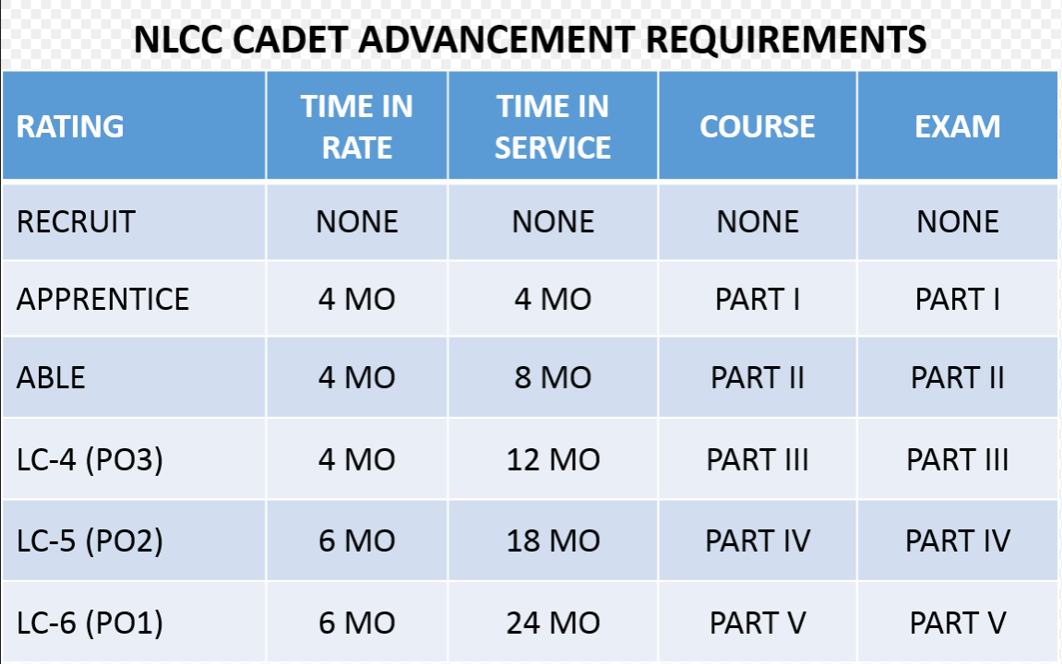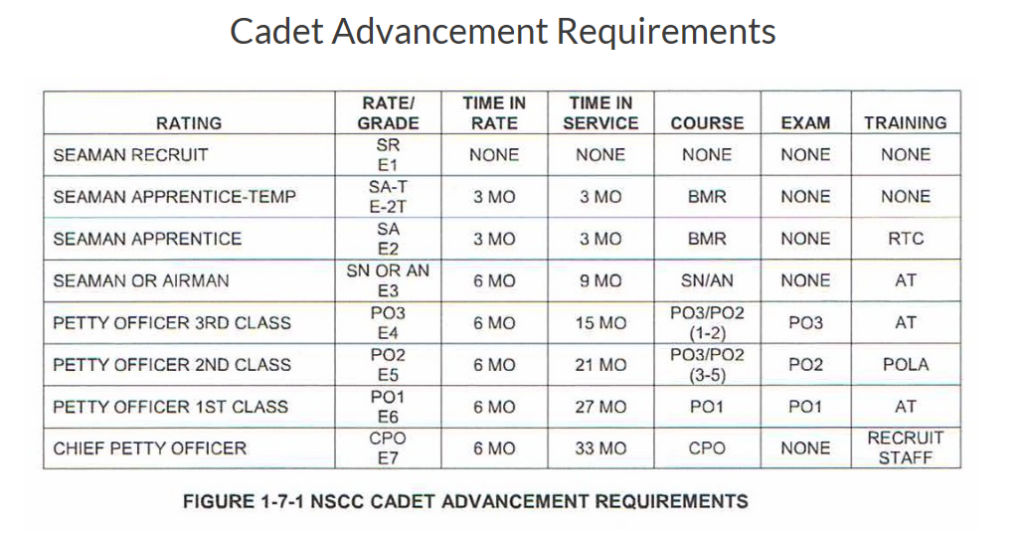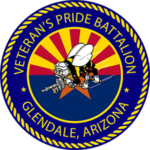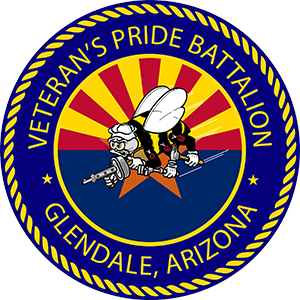Resources
Parents are an Important Part of the Sea Cadets
WELCOME ABOARD! If you are new to the U.S. Naval Sea Cadet Corps (USNSCC) program there are many ways you can get involved and resources are available to help you learn the lingo and ‘navigate the unchartered waters. The USNSCC maintains an open-door policy with all parents. If you have any questions or concerns you are welcome to address them with the unit’s Commanding Officer.
The USNSCC publishes a Parent’s Manual to assist parents in learning their role in the program as well as what they can expect for their cadets. For the latest copy of the Handbook click on the Parent’s Handbook Image on the left. You can also find online resources for uniforms, operations and training at the USNSCC Homeport website.
U.S. Naval Sea Cadet Corp Parent Handbook
Cadet Re-Enrollment
Established cadets are required to RE-Enroll annually. The expiration date for their enrollment can be located on the Cadet’s Sea Cadet ID card that was issued when the cadet first joined the program. The RE-Enrollment fee is $125. To pay online, click the payment button below. The total will be $128.00, which includes the online payment convenience fee of $3.00. You may also pay at drill by bringing $125 in cash or check.
Here is example text.
There are many resources available to you to make your time as a Sea Cadet a huge success. Below are helpful links and forms:
Medical Exam
https://veteranspridebattalion.org/wp-content/uploads/2020/04/Medical-Exam.pdf
Medical History Form
https://veteranspridebattalion.org/wp-content/uploads/2020/04/Medical-History-Form.pdf
Medical History Supplemental Form
https://veteranspridebattalion.org/wp-content/uploads/2020/04/Medical-History-Supplemental-Form.pdf
Sea Cadet Homeport
https://homeport.seacadets.org/secure/Home.aspx
National Sea Cadet website
https://www.seacadets.org/
Uniform Regulations
https://homeport.seacadets.org/HomeportDownloads/Library/110/2011%20Uniform%20Regulations.pdf
Sea Cadet Physical Readiness Training Manual
https://homeport.seacadets.org/secure/MasterDocView.aspx
Training List Portal
https://homeport.seacadets.org/secure/TrainingList.aspx
Cadet Advancement Link
https://homeport.seacadets.org/secure/Library.aspx
Parents Handbook
https://homeport.seacadets.org/HomeportDownloads/Library/861/Step%203-%20USNSCC%20Parent’s%20Handbook%20(2018).pdf?id=438988743000926
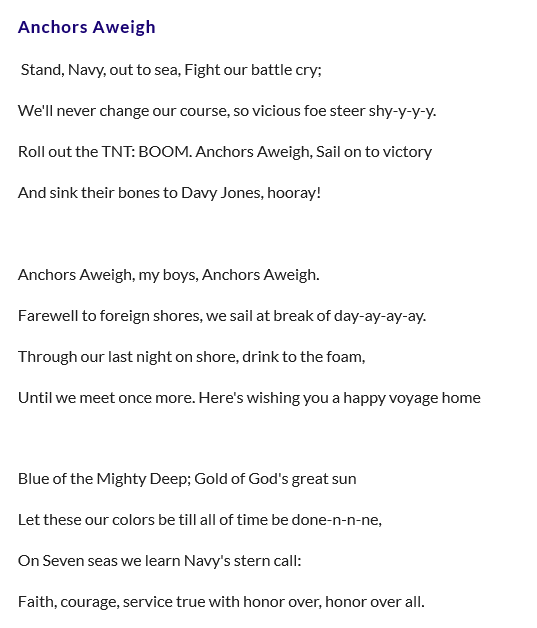
Semaphore Flag Signaling System:
https://veteranspridebattalion.org/wp-content/uploads/2020/04/semaphore.pdf
Sailor’s Creed:
I am a Unites States Sailor.
I will support and defend the constitution of the United States of America and I will obey the orders of those appointed over me.
I represent the fighting spirit of the Navy and those who have gone before me to defend freedom and democracy around the world.
I proudly serve my Navy’s combat team with HONOR, COURAGE, and COMMITMENT.
I am committed to excellence and the fair treatment of all.
11 General Orders
- To take charge of this post and all government property in view.
- To walk my post in a military manner, keeping always on the alert, and observing everything that takes place within sight or hearing.
- To report all violations of orders I am instructed to enforce.
- To repeat all calls from posts more distant from the guardhouse than my own.
- To quit my post only when properly relieved.
- To receive, obey and pass on to the sentry who relieves me, all orders from the Commanding Officer, Command Duty Officer, Officer of the Day, Officer of the Deck, and Officers and Petty Officers of the Watch only.
- To talk to no one except in the line of duty.
- To give the alarm in case of fire or disorder.
- To call the Corporal of the Guard or Officer of the Deck in any case not covered by instructions.
- To salute all officers, all colors and standards not cased.
- To be especially watchful at night and during the time for challenging, to challenge all persons on or near my post, and to allow no one to pass without proper authority.
Physical Fitness is an important part of the journey as a Sea Cadet.
The Sea Cadet program believes in promoting healthy lifestyles and physical fitness is a part of that.
• Every drill weekend will include some physical fitness training
• Twice a year a cadet will be tested on an age-adjusted Physical Readiness Test (PRT)
• In order to make rank, a cadet must pass their PRT.
• To graduate from Recruit Training (boot camp) a cadet must pass the PRT.
• To attend trainings a cadet must have passed a PRT within 6 months of that training.
As you can see, it’s important to the program! We encourage all cadets to develop their own exercise routine at home between drills, which should include: Push-ups, Sit-ups, Stretching, and Running at least one mile. They should do this at least 3 to 4 times each week on their own. One cannot be physically inactive between drills and show up at drill anticipating to pass the PRT. They must be engaged in this process from month to month.
There is opportunity for cadets to earn a Physical Fitness Ribbon. Any cadet who passes with a “Good” score, will be awarded the PT Ribbon. A cadet that passes with an “Excellence” score will be awarded an “E” appurtenance on their PT Ribbon.
Cadets aspiring to attend intense trainings like NSCC SEAL Training, Special Warfare Combatant Craft Crewman (SWCC) Training, Urban County Insurgency (U-COIN) Training, Aviation Rescue Swimmer Training and other similar trainings will have to pass even tougher PRT examinations.
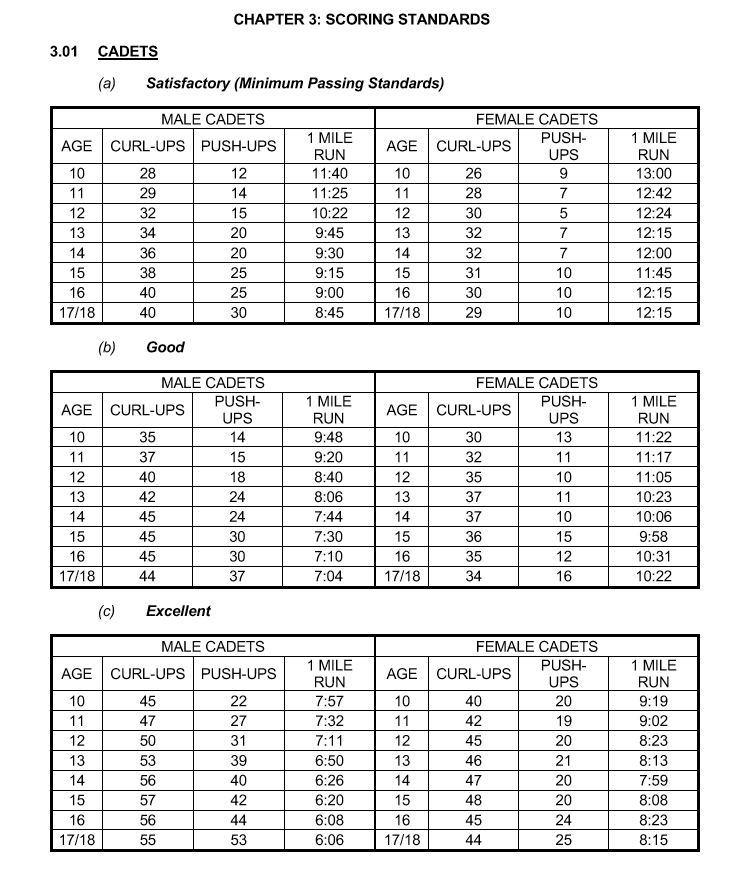
Trainings are an integral part of the Sea Cadet program. Throughout the year, Cadets learn and experience much as a unit through coursework, trips, drills and more – all of this is in preparation for Summer and Winter Trainings. This is where Cadets get to spend 24/7 learning everything from medical field ops to scuba diving.
Recruit Training and League Orientation Training
Before any cadet can attend Advanced Trainings, they must first attend boot camp. For Sea Cadets, that is called “Recruit Training” and for League Cadets that is called “League Orientation Training”.
Recruit Training is required for Sea Cadets to advance in rank whereas League Orientation is not required – however League Cadets who do not attend Orientation training cannot attend any other trainings.
Where can I find trainings?
Trainings are listed on the Sea Cadet Homeport webpage (https://homeport.seacadets.org/secure/TrainingList.aspx)
The Summer Trainings begin being posted in late Spring whereas Winter training opportunities typically are posted mid-Fall. You can search by training type or location. For Recruit and Orientation, you can sort those out by type if desired.
Review the trainings offered, paying attention to the date it is offered and where it is located. When you find one you are interested in knowing more about, click on the “Details” button to learn more about the training. Some trainings have specific age or rank requirements – so pay close attention to this details page.
It is the Cadet’s responsibility to cover travel costs to attend trainings. All other costs (food, housing, and any special equipment) is covered by the training fee that is listed.
When you have found a training you would like to attend, please let the Training Officer know and he/she will verify all eligibility requirements have been met and will get you registered for the training.
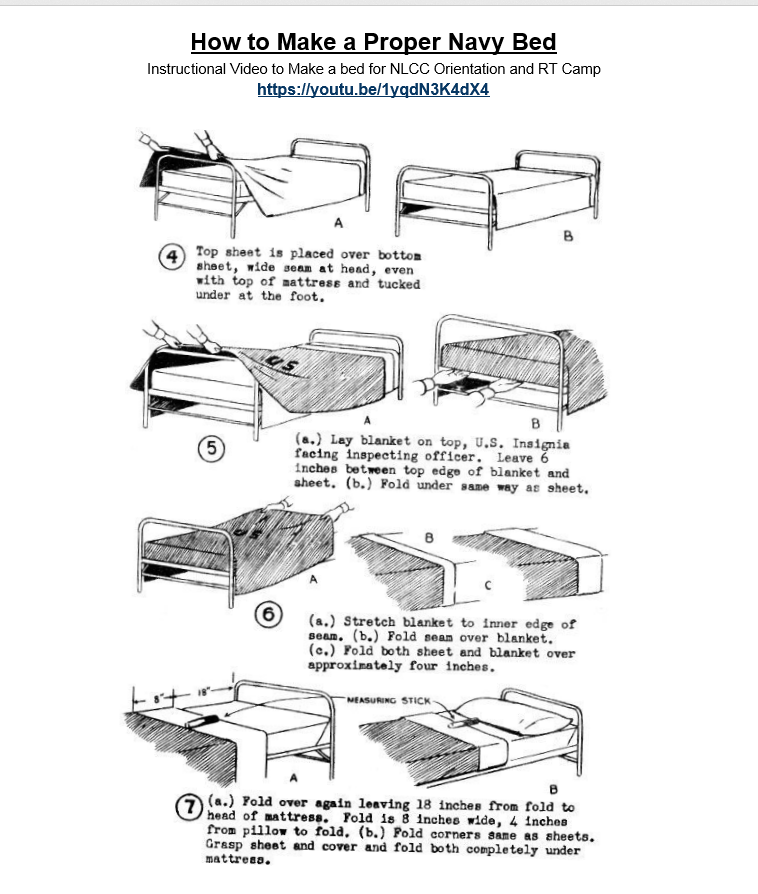
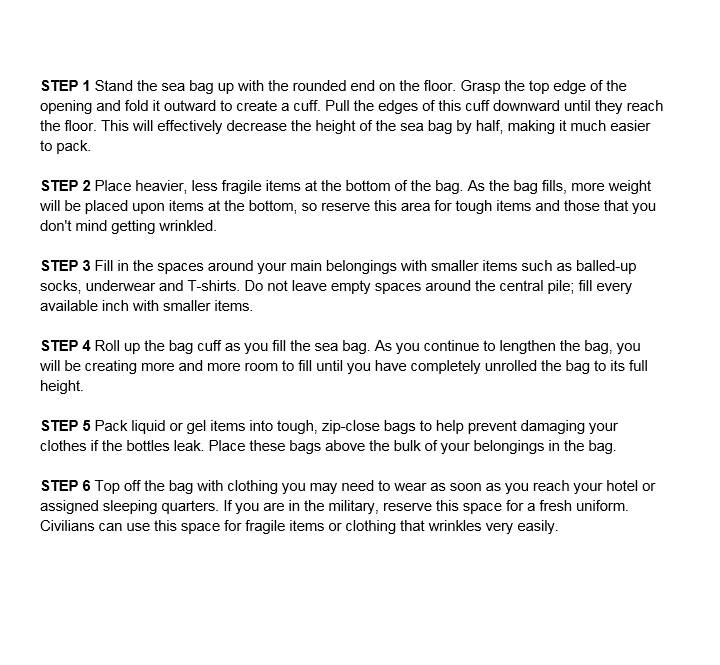
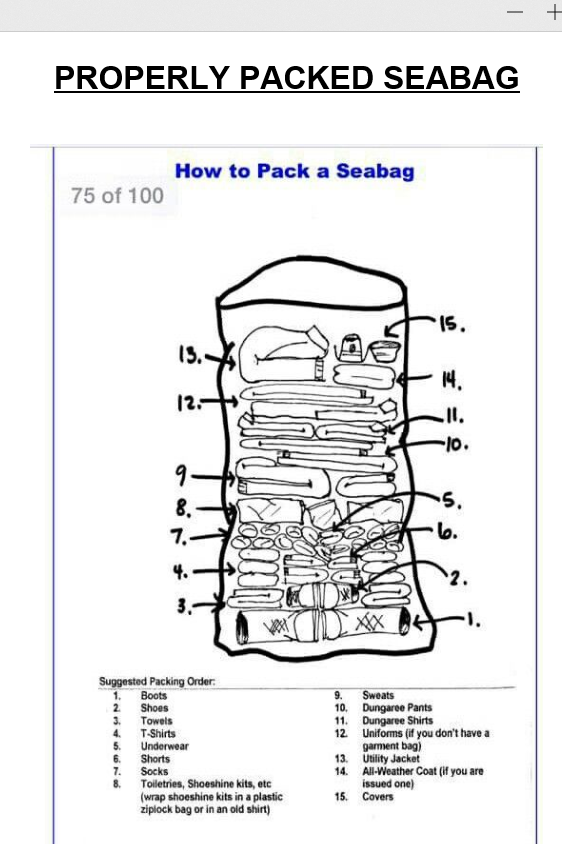

When the dress uniforms are pressed, make sure the uniforms are inside out so that the creases are inverted when you put it on. Jumper and trousers are NEVER creased from the outside. ALWAYS turn the jumper and trousers wrong-side out as shown below.
The JUMPER is folded down the middle with the collar flap extended. Lie the jumper back down and fold the right sleeve across the front and match it up with the left sleeve. Smooth the jumper out so the crease extends evenly from the top of the collar with the bottom of the waist band. Use a damp piece of sheet between the hot iron and the fabric. The damp cloth creates steam that sets in a sharp crease. Begin ironing along the back of the jumper as seen in the picture (second on right), moving from the tip of the collar all the way down; then crease the sleeves while still folded in half. Unfold the jumper so it lies flat on its back. You should see an inward crease extending from the V-neck down to the waist band. Make sure there are no multiple creases. Fold both sides of the collar flap in toward the center crease and using the dampened cloth, carefully iron the creases in on both sides (be careful not to iron out the center crease. There should now be three sharp creases in the collar flap with an equal distance between each crease.
TROUSERS: Fold the trousers wrong-side out and lie them flat on the ironing board seam to seam. When finished, the two creases will run along the outside edge of the pant leg, NOT THE FRONT, with the corresponding crease running along the inseam.
When ironing is completed, you can turn the uniform right-side out and you should see that all creases EXCEPT the front middle crease and the three creases on the collar flap are turned inward, not out.
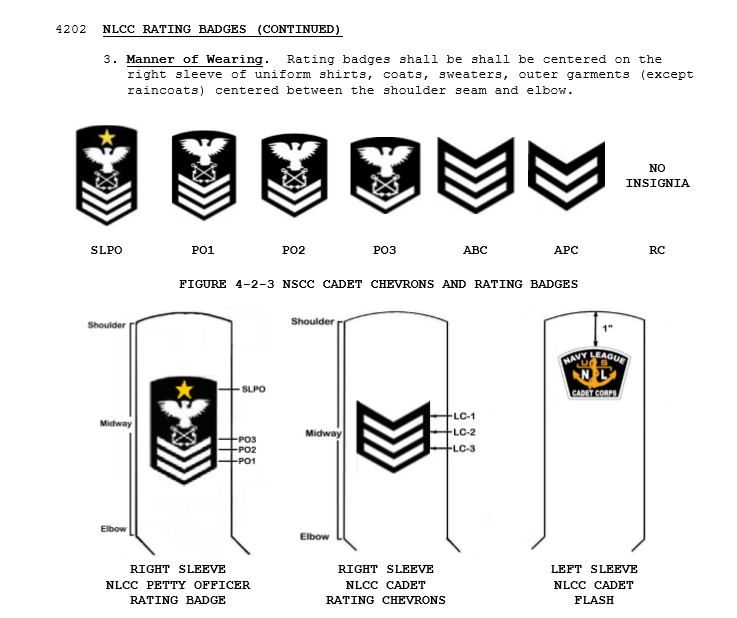
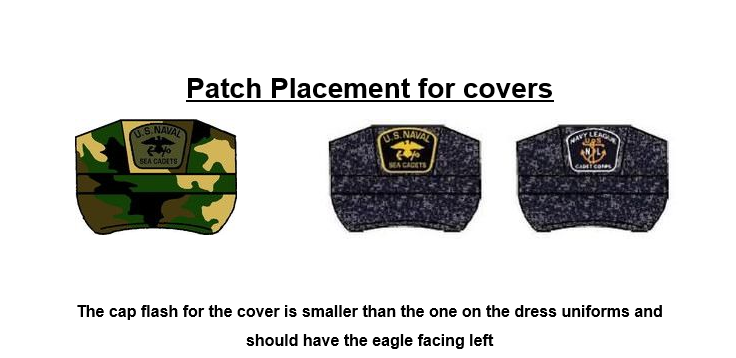
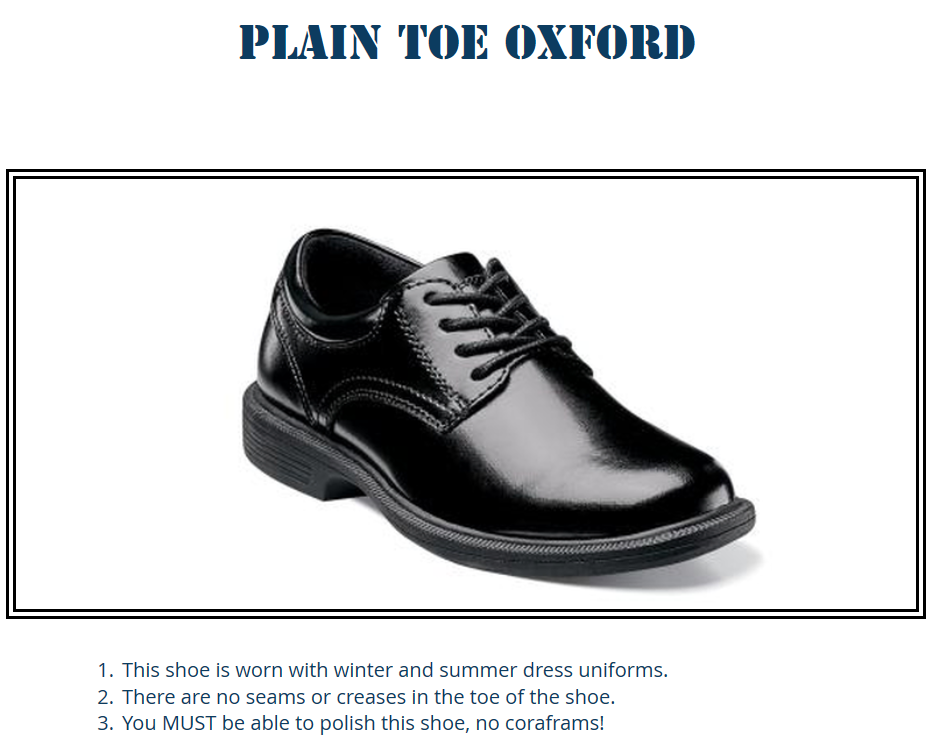
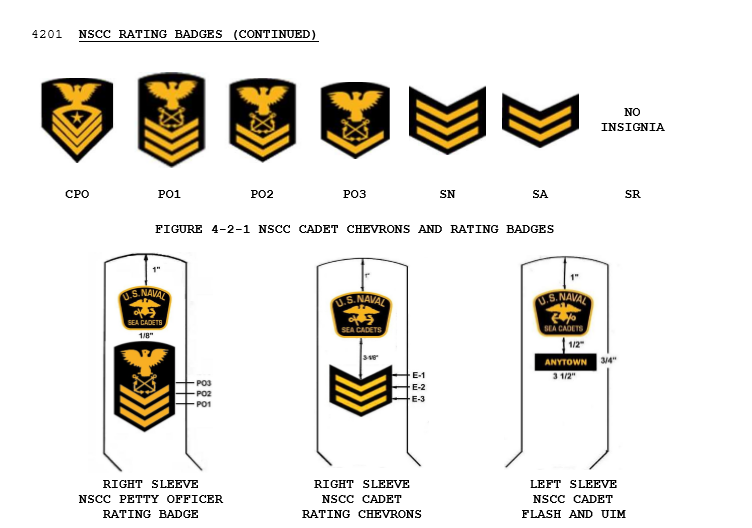
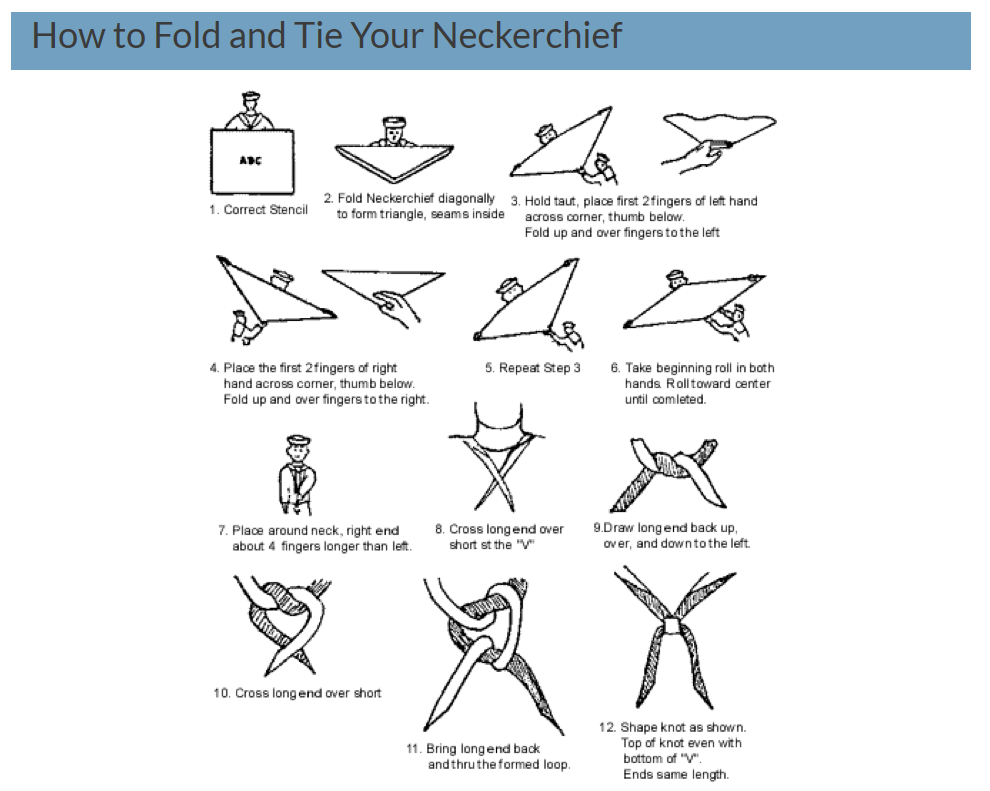
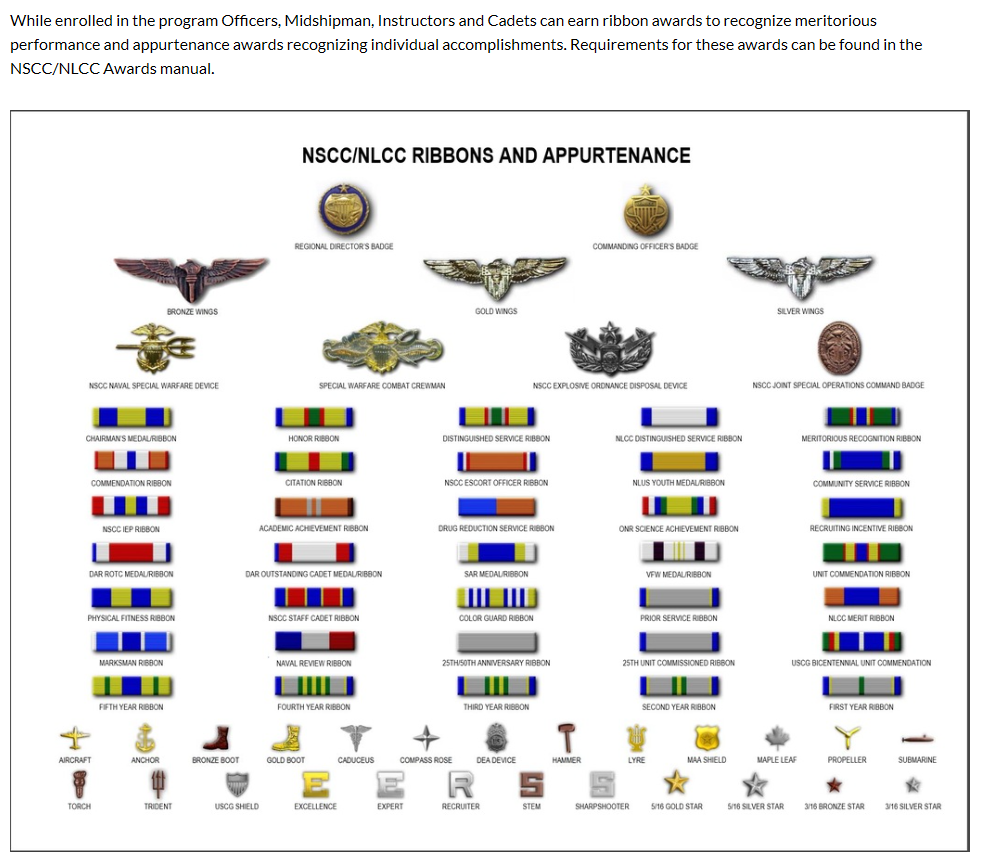

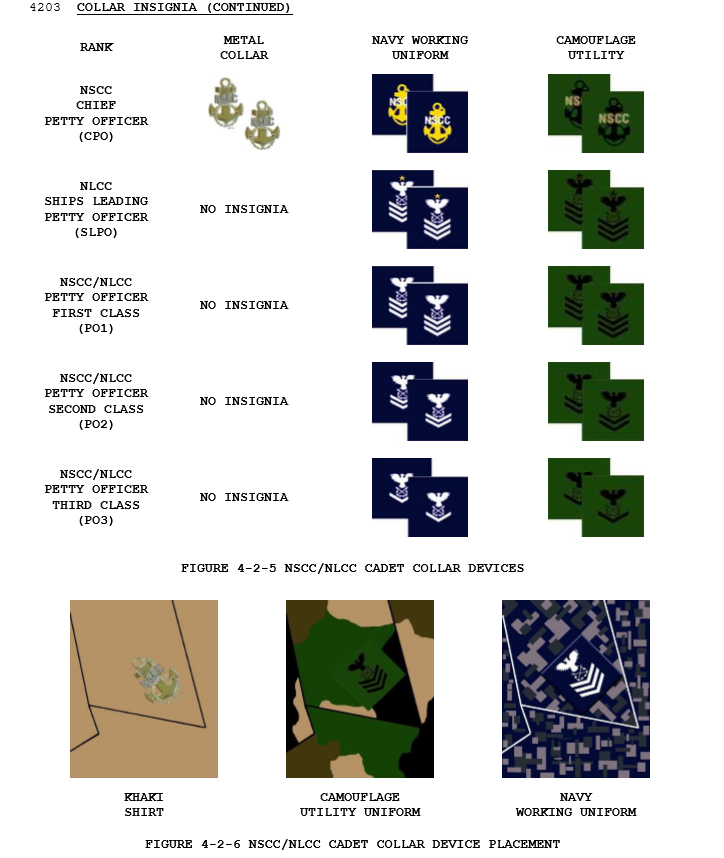
NSCC Cadet Advancement Requirements
Seaman Apprentice – Temporary (SA-T). NSCC Cadets recruited early in the school year may not have the opportunity to attend NSCC Recruit Training until after the minimum three months’ time in rate. In this case, unit commanding officers may effect a temporary advancement to E2T. This temporary advancement starts the six- month clock toward time-in-rate requirement for promotion to E3, and provides additional motivation to complete the BMR. Cadets may be advanced to Seaman Apprentice – Temporary (E2T) in Magellan when the following requirements are met and have been recorded in Magellan:
• Complete the Basic Military Requirements Course (BMR), NAVEDTRA 14325.
• BMR coursework found here: https://homeport.seacadets.org/secure/MasterDocView.aspx
• Serve a minimum 3 months in the NSCC.
• Pass the Physical Readiness Test (PRT) within the previous six months.
Former NLCC Cadets who transfer to the NSCC program may be advanced to E2T upon enrollment, provided the following requirements have been met and have been recorded in Magellan:
• A minimum of one year in the NLCC program with no break in service between
• Successful completion of NLCC Basic
• Achieved the rate of Petty Officer Third Class (PO3/LC4) or higher.
• Those cadets not meeting all of the above prerequisites will be enrolled in the NSCC as Seaman Recruit.
Seaman Apprentice (SA). Cadets may be advanced to Seaman Apprentice (E2) in Magellan when the following requirements are met and have been recorded in Magellan:
• Complete the Basic Military Requirements Course (BMR), NAVEDTRA 14325.
• Successful completion of NSCC Recruit Training (aka Boot Camp or RT).
• Pass the Physical Readiness Test (PRT) within the previous six months.
• Serve a minimum of 3 months as a Recruit (E1).
• Serve a minimum of 3 months as a Sea Cadet.
Seaman or Airman (SN/AN). Cadets may be advanced to Seaman or Airman (E3) in Magellan when the following requirements are met and have been recorded in Magellan:
• Complete the Seaman Course (SN), NAVEDTRA 14067
Coursework found here: https://homeport.seacadets.org/secure/MasterDocView.aspx
• Complete one NHQ-approved advanced training.
• Pass the Physical Readiness Test (PRT) within the previous six months.
• Serve a minimum of 6 months as an Apprentice (E2). Please note that time in service as an E2T counts toward the satisfaction of this requirement.
• Serve a minimum of 9 months as a Sea Cadet.
Petty Officer Third Class (PO3). Cadets may be advanced to Petty Officer Third Class (E4) in Magellan when the following requirements are met and have been recorded in Magellan:
• Complete assignments 1 and 2 of the Petty Officer 3 & 2 Course (PO3/2), NAVEDTRA 14504.
Found here: https://homeport.seacadets.org/secure/MasterDocView.aspx
• Pass the Petty Officer Third Class Examination.
• Complete one NHQ-approved advanced training.
• Pass the Physical Readiness Test (PRT) within the previous six months.
• Serve a minimum of 6 months as a Seaman/Airman (E3).
• Serve a minimum of 15 months as a Sea Cadet.
Petty Officer Second Class (PO2). Cadets may be advanced to Petty Officer Second Class (E5) in Magellan when the following requirements are met and have been recorded in Magellan:
• Complete assignments 3, 4, and 5 of the Petty Officer 3 & 2 Course (PO3/2), NAVEDTRA 14504.
Found here: https://homeport.seacadets.org/secure/MasterDocView.aspx
• Pass the Petty Officer Second Class Examination.
• Complete Petty Officer Leadership Academy (POLA) while a SN/AN or PO3. If POLA was used to satisfy the training requirement for advancement to PO3, another NHQ-approved training must be completed.
• Pass the Physical Readiness Test (PRT) within the previous six months.
• Serve a minimum of 6 months as a Petty Officer Third Class (E4).
• Serve a minimum of 21 months as a Sea Cadet.
Petty Officer First Class. Cadets may be recommended for advancement to Petty Officer First Class (E6) in Magellan when the following requirements are met and have been recorded in Magellan:
• Complete the Petty Officer First Class Course (PO1), NAVEDTRA 14145.
Found here: https://homeport.seacadets.org/secure/MasterDocView.aspx
• Pass the Petty Officer First Class Examination.
• Complete one NHQ-approved advanced training.
• Pass a semi-annual physical fitness assessment.
• Serve a minimum of 6 months as a Petty Officer Second Class (E5).
• Serve a minimum of 27 months as a Sea Cadet.
Chief Petty Officer. Cadets may be recommended for advancement to Chief Petty Officer (E7) in Magellan when the following requirements are met and have been recorded in Magellan:
• Complete the Chief Petty Officer Course (CPO), NAVEDTRA 14144.
Found here: https://homeport.seacadets.org/secure/MasterDocView.aspx
• Complete Staff Cadet Duty in a leadership position at either NSCC Recruit Training or NLCC Basic Orientation after the completion of Petty Officer Leadership Academy (POLA). If Staff Cadet Duty was used to satisfy the training requirement for advancement to PO1, another NHQ-approved training must be completed.
• Pass a semi-annual physical fitness assessment.
• Have reached at least 16 years of age.
• Serve a minimum of 6 months as a Petty Officer First Class (E6).
• Serve a minimum of 33 months as a Sea Cadet.
How do I Promote in the Program?
NLCC Cadet Advancement Requirements
All coursework for League Cadets can be found here: https://homeport.seacadets.org/secure/MasterDocView.aspx
Apprentice Cadet (APC). When new cadets join, they hold the rank of LC-1 or Recruit Cadet. Cadets may be advanced to Apprentice Cadet (LC2) in Magellan (the database that is used throughout the sea cadet program) when the following requirements are met and have been recorded in Magellan:
• Complete Part 1 of the NLCC Syllabus.
• Pass the Apprentice Cadet Examination (done via the Unit Training Officer).
• Pass the Physical Readiness Test (PRT) within the previous six months.
• Serve a minimum 4 months in rate as a Recruit Cadet (LC1).
• Serve a minimum 4 months as an NLCC Cadet.
Able Cadet (ABC). Cadets may be advanced from Apprentice Cadet (LC2) to Able Cadet (LC3) in Magellan when the following requirements are met and have been recorded in Magellan:
• Complete Part 2 of the NLCC Syllabus.
• Pass the Able Cadet Examination.
• Pass the Physical Readiness Test (PRT) within the previous six months.
• Serve a minimum 4 months in rate as an Apprentice Cadet (LC2).
• Serve a minimum 8 months as an NLCC Cadet.
Petty Officer Third Class (PO3). Cadets may be advanced to Petty Officer Third Class (LC4) in Magellan when the following requirements are met and have been recorded in Magellan:
• Complete Part 3 of the NLCC Syllabus.
• Pass the PO3 Examination.
• Pass the Physical Readiness Test (PRT) within the previous six months.
• Serve a minimum 4 months in rate as an Able Cadet (LC3).
• Serve a minimum 12 months as an NLCC Cadet.
Petty Officer Second Class (PO2). Cadets may be advanced to Petty Officer Second Class (LC5) in Magellan when the following requirements are met and have been recorded in Magellan:
• Complete Part 4 of the NLCC Syllabus.
• Pass the PO2 Examination.
• Pass the Physical Readiness Test (PRT) within the previous six months.
• Serve a minimum 6 months in rate as a PO3 (LC4).
• Serve a minimum 18 months as an NLCC Cadet.
Petty Officer First Class (PO1). Cadets may be advanced to Petty Officer First Class (LC6) in Magellan when the following requirements are met and have been recorded in Magellan:
• Complete Part 5 of the NLCC.
• Pass the PO1 Examination.
• Pass the Physical Readiness Test (PRT) within the previous six months.
• Serve a minimum 6 months in rate as a PO2 (LC5).
• Serve a minimum 24 months as an NLCC Cadet.
Ship’s Leading Petty Officer. Cadets may be advanced to Ship’s Leading Petty Officer when the following requirements are met and have been recorded in Magellan:
• Complete assignments 1 through 6 of the Basic Military Requirements Course (BMR), NAVEDTRA 14325.
• Pass the Physical Readiness Test (PRT) within the previous six months.
• Be at least 12 1/2 years of age.
• Serve a minimum 6 months in rate as a PO1 (LC6).
• Serve a minimum 30 months as an NLCC Cadet.
Advancement Procedures
Advancements. Completion of all requirements for all ranks must be recorded in the Magellan Record Book for each advancement. This includes all courses, exams and trainings. The cadet promotion matrix controls all advancements. All requirements must reflect “green” to affect a promotion. At no time will a Cadet be advanced to “acting” or “temporary” grades. Frocking, early promotions, and “merit” promotions are NOT authorized.
Advancement Authority. The unit commanding officer is the advancement and signature authority for NLCC rates up to PO1. The Executive Director is the signature authority for SLPO, but these advancements are approved by the unit commanding officer. When appointing to SLPO, the unit commanding officer will select the name of the current Executive Director from the drop-down box on the “Add a Promotion” page. The NLCC Petty Officer Advancement Certificate with Executive Director Signature will be available for downloading and printing from the cadet’s landing page in Magellan. NLCC advancements are administrative and require no action from National Headquarters.
Click Here for the Correspondence Coursework Guide
